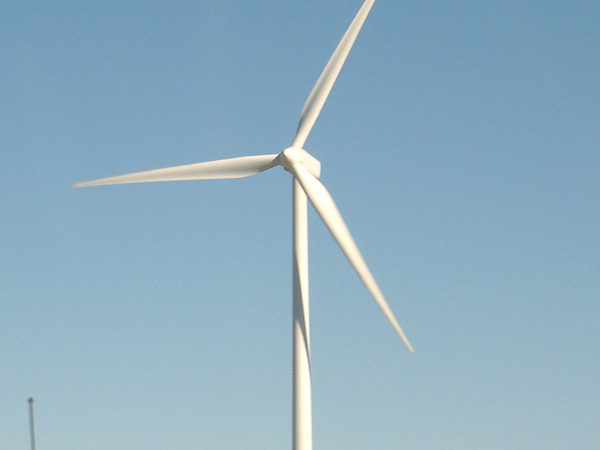Conclusion of our series on the Colorado Green New Deal
As the summer ends, it’s time to wrap up our series on the Colorado Green New Deal (CGND). Democrats in the house, senate, and governor’s office have been dedicated to moving the state toward what the Polis Administration describes as a “clean energy future.” This move might have begun in the General Assembly, but make no mistake, Governor Jared Polis has played a significant role pushing the agenda.
Although it is safe to assume the pursuit of renewable electricity, electric vehicles, and emission reduction policies/plans will continue, here at the Independence Institute, we want to arm our followers and politicians with arguments and analysis dedicated to countering what the policies Democrats have been legislating or putting forth via executive order.
That was one of our goals with the CGND blog series: to inform readers and voters and voice concerns over the energy and environmental policies our elected and nonelected officials have adopted that will affect our mobility and change how we power our economy. Whether it was mandating energy efficient appliances or incentivizing the purchasing of electric vehicles or adopting policies aimed at rescuing coal communities that will be harmed with the mandated transition away from fossil fuels, Democrats didn’t shy away from their radical environmental agenda during the 2019 Legislative Session.
Many of the laws and policies adopted will be expensive, and because of all the additional promises made (i.e., free full-day kindergarten), Democrats have had to scramble to find funds. Now, they’re wanting to keep all of the state tax revenue through Proposition CC in order to fulfill their guarantees. We at the Energy and Environmental Policy Center are simply saying: maybe the Democrats should have thought twice before extending the electric vehicle tax credits and adopting Senate Bill 181. After all, the oil and gas industry supports almost 90,000 jobs in Colorado, makes up $13.5 billion of our gross domestic product (GDP), and contributes $1 billion annually in taxes, the majority of which funds education.
It’s also worth mentioning that the environmental push continued after the legislative session. In May, Governor Polis revealed his roadmap to 100 percent renewable electricity by 2040, and in August, the Colorado Department of Public Health and Environment, at the direction of the governor,adopted the Zero Emission Vehicle Mandate (ZEV).
To learn more about ZEV and Colorado’s adoption of California’s vehicle emission and fuel standards (Cal-LEV), see our Coalition of Ratepayers website. There you’ll find information on Cal-LEV and ZEV, and President Trump’s plan to implement a single national fuel and emission standard – his Safe Affordable Fuel-Efficient (SAFE) Vehicles Rule. If adopted, SAFE will preempt California from implementing its own fuel standards and electric vehicle mandate; it will also inhibit Colorado from adopting them; and it’s projected to save Americans $500 billion.
Within the next month or so, we’ll also be publishing a report on Governor Polis’ plan to radically alter Colorado’s electric grid by powering the state with renewable electricity only. The report will discuss the costs associated with transitioning to 100 percent renewables and offers alternative paths to reduce our electric grid’s carbon footprint. Neither of the three options are cheap, but the report raises questions that Colorado residents need to think about. Do we want reliable, cheap, and carbon free electricity? If so, should nuclear power be considered an option? Should the electric grid be centralized or distributed? Are people more interested in having more control over their electricity usage and generation?
These are the questions that have been on our mind this summer, and we believe everyone should be thinking about them too. Colorado Democrats may be fine codifying Xcel Energy into existence till 2050, as they did in the Public Utilities Commission sunset bill, but we think projecting decades into the future is risky business.
As America’s electric grid continues to age, receiving a D+ from the American Society of Civil Engineers, it’s time to think about and decide what our grid in the 21stcentury will look like. Microgrid technology has the ability to achieve optimum efficiency using a variety of sources – natural gas, solar, small scale nuclear and hydro, and batteries; voluntary implementation of demand side management technology; and back up natural gas generators. It’s time to at least start the conversation about moving away from a centralized system, and it’s why we’re cohosting Colorado’s first Annual Microgrid Conference on November 8 with our microgrid allies from Clean Energy Action and HOMER Energy.
A Colorado Green New Deal doesn’t have to be exclusive, and everyone’s concerns as well interests should be heard. Although we expect the 2020 Legislative Session to be much of the same as last year, we’ll be prepared to counter the proposed legislation with data and offer alternative strategies to achieving the same goal, a clean energy future.
Colorado Green New Deal blog series:
Introduction (Blog Post 1), Blog Post 2, Blog Post 3, Blog Post 4, Blog Post 5, Blog Post 6








